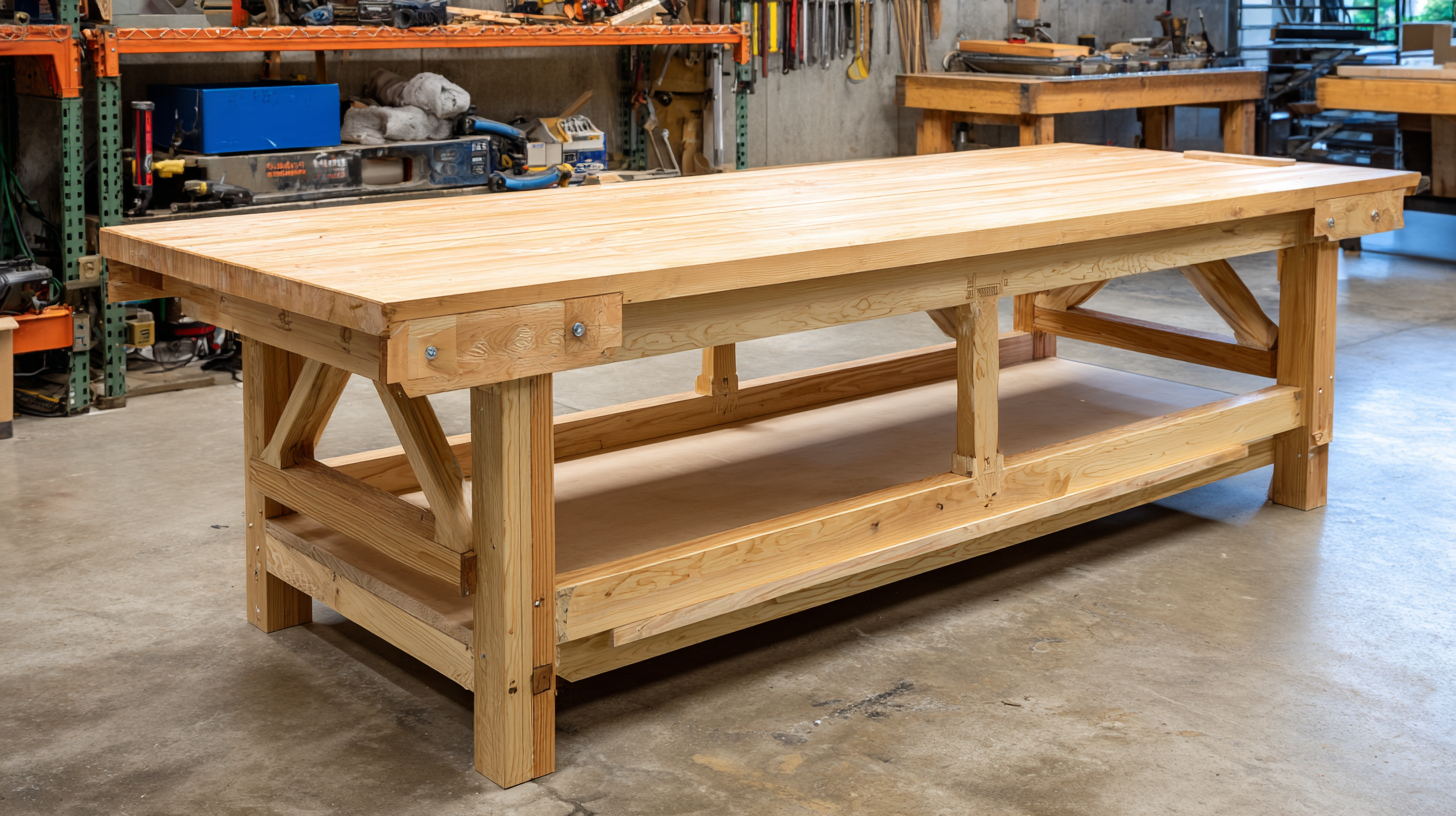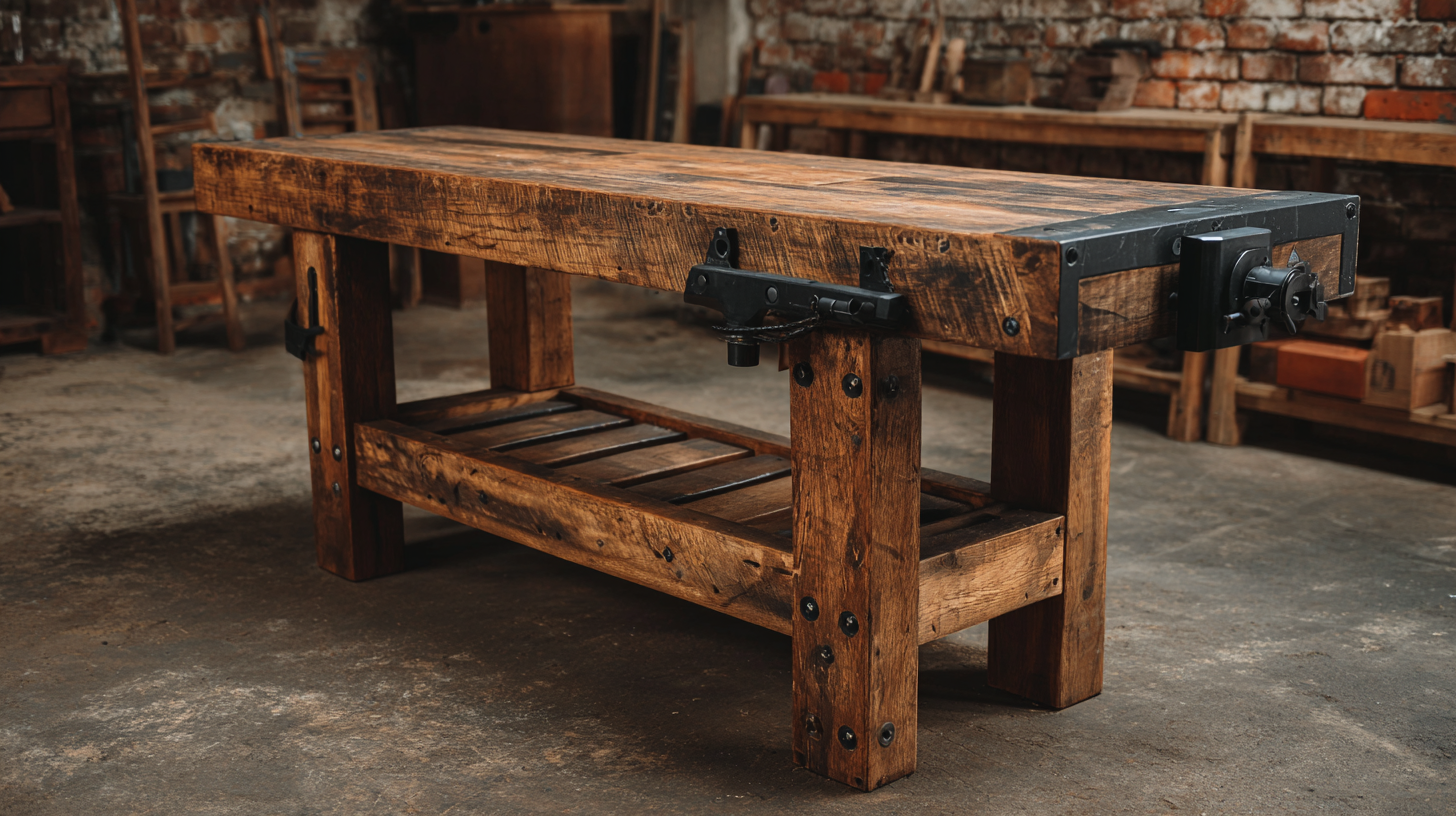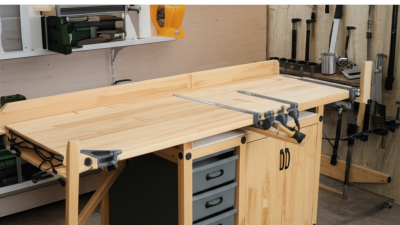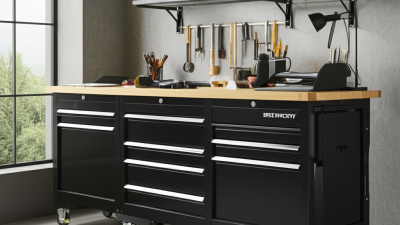Transform Your Workspace: The Ultimate Guide to Building the Perfect Workbench Table
Creating an efficient and organized workspace is crucial for maximizing productivity, especially in environments where hands-on tasks and creative projects are undertaken. A well-constructed workbench table is not merely a surface; it is the foundation for innovation and craftsmanship. According to recent industry reports, nearly 70% of professionals believe that the quality of their workspace directly impacts their effectiveness, highlighting the importance of investing in a suitable workbench table. Moreover, with the rise of DIY projects and home workshops, understanding how to design and build a workbench that meets individual needs is more relevant than ever. This guide aims to provide you with expert tips and insights into constructing the perfect workbench table, transforming your workspace into a hub of productivity and creativity.

Choosing the Right Materials for Your Workbench Table Construction
When it comes to building a workbench table, choosing the right materials is crucial for achieving both durability and functionality. High-quality wood is often recommended for workbench construction, with oak and maple being among the most popular choices due to their strength and resilience. According to a report by the Wood Products Council, hardwoods like oak can withstand heavy impacts and resist wear, making them ideal for a workbench surface that endures frequent use. Additionally, the thickness of the wood plays a significant role; a minimum thickness of 1.5 inches is suggested to ensure stability and support for various projects.

Incorporating plywood or melamine for the workbench base can further enhance the structure's sturdiness while optimizing cost. A study published by the National Association of Home Builders highlights that using engineered wood products, like plywood, can reduce overall costs while providing excellent strength-to-weight ratios. Assembling a workbench with a combination of solid hardwood tops and engineered bases allows for a balance between aesthetics and functionality, making it not only a productive workspace but also an attractive addition to your garage or workshop. Selecting the right mix of materials can ultimately lead to a workbench that meets your specific needs and withstands the test of time.
Essential Tools You Need for Building a Workbench Table
To create the ideal workbench table, having the right tools at your disposal is paramount. Start with the basics: a sturdy circular saw for cutting large sheets of wood and a miter saw for precise crosscuts. These tools will ensure that your woodworking projects are accurate and efficient. Additionally, a drill/driver is essential for making holes and driving screws, allowing you to assemble your workbench securely.
Don’t overlook the importance of hand tools in your workshop. A set of quality chisels will help you refine edges and achieve detailed work, while a block plane can smooth surfaces for a professional finish. Furthermore, a good rule and measuring tape are indispensable for ensuring that your dimensions are exact. With these essential tools at hand, you’ll be well on your way to crafting a functional and personalized workbench that meets all your workspace needs.
Essential Tools for Building a Workbench Table
This chart displays the essential tools needed for building a workbench table along with their estimated costs. The data highlights the most crucial tools and helps you budget for your project effectively.
Designing Your Workbench: Key Features and Customizations
When designing your workbench, several key features can enhance functionality and efficiency. First, consider the height of your bench; it should be tailored to your tasks, whether you’re woodworking, metalworking, or general crafting. An adjustable height mechanism allows for versatility, accommodating various projects and promoting ergonomic comfort. Additionally, a sturdy surface material such as hardwood or laminate can resist wear and tear while providing a flat, durable work area.

Customizations play a crucial role in making your workbench uniquely suited to your needs. Incorporating storage solutions like drawers, shelves, and pegboards can help keep tools organized and within reach. Furthermore, built-in features such as vises, drop-down extensions, or tool trays can streamline your workflow. Don’t forget about the importance of proper lighting; integrating task lights or overhead fixtures will ensure that your workspace remains bright and conducive to detail-oriented tasks. Personal touches, such as a designated layout for tools and accessories, can further enhance your overall efficiency and enjoyment while working.
Step-by-Step Guide to Assembling Your Workbench Table
Building your own workbench table can significantly enhance your workspace efficiency and comfort. According to a report by the American National Standards Institute (ANSI), having an ergonomic workspace can improve productivity by up to 30%. This highlights the importance of a well-designed workbench that suits your specific needs and tasks. In this step-by-step guide, we’ll explore the essential components of a perfect workbench, from selecting the right materials to understanding the proper dimensions for your work style.
To start assembling your workbench table, begin by choosing high-quality plywood or hardwood for the surface, as these materials provide durability and stability. Industry experts recommend a surface height of 32 to 36 inches for optimal posture while working. Next, ensure your workbench is equipped with adequate storage solutions, such as drawers or shelving units, which can keep tools organized and within reach. According to a study published by the Industrial Designers Society of America, well-organized workspaces can reduce time spent searching for tools by 25%, allowing for a more efficient workflow. By following these guidelines and prioritizing functionality, you'll create a workbench that not only meets your needs but also enhances your overall productivity.
Transform Your Workspace: The Ultimate Guide to Building the Perfect Workbench Table
| Dimension | Measurement | Material | Purpose |
|---|---|---|---|
| Length | 60 inches | Plywood | Workbench Surface |
| Width | 30 inches | Plywood | Workbench Surface |
| Height | 36 inches | Metal | Legs/Support |
| Weight Capacity | 500 lbs | Wood/Metal | Durability |
| Surface Finish | Sanded and Sealed | Varnish | Protection |
Enhancing Functionality: Storage Solutions for Your Workbench
When designing the perfect workbench, enhancing functionality through effective storage solutions is crucial. A well-organized workspace not only boosts productivity but also minimizes frustration during projects. Consider incorporating a combination of open shelving and closed cabinets to accommodate various tool types and sizes. Open shelves provide easy access to frequently used items, while cabinets can be used to hide away less-used tools, materials, or bulky equipment. Vertical storage options, such as pegboards, can also help keep tools within reach while maximizing wall space.
In addition to traditional storage, utilizing mobile carts and toolboxes can further enhance the versatility of your workbench. Carts with wheels allow you to easily relocate tools and materials as needed, adapting to the demands of your projects. Look for units with additional drawers or compartments to keep small parts organized and readily accessible. Another innovative storage solution is to integrate magnetic strips or containers for smaller tools, keeping them visible yet out of the way. By thoughtfully designing your workbench with these storage solutions, you create a functional environment that encourages creativity and efficiency.
Related Posts
-

What Makes the Best Rolling Workbench Essential for Every Workshop
-

Unleashing the Power of Chinese Manufacturing for the Best Metal Work Benches Worldwide
-

How to Choose the Best Tool Workbench for Your DIY Projects
-

The Evolution of Workspaces with the Best Rolling Workbench Solutions
-

How to Choose the Perfect Rolling Workbench for Your Workshop Needs
-

Unlocking Efficiency: A Complete Guide to the Specifications and Setup of the Ultimate Heavy Duty Workbench
Footer
Resource Center
Contact Us
1901 West Main Street
Washington, MO 63090
Main Directory: 1-800-227-4873
Email: sale@pangcofurniture.com
Affiliations


